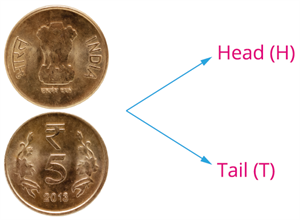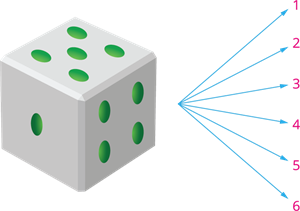UPSKILL MATH PLUS
Learn Mathematics through our AI based learning portal with the support of our Academic Experts!
Learn moreConsider a scenario of tossing a coin.

Either we get a head, or a tail is equally likely to appear. In other words, we can say the probabilities of both events are equal.
That is, P(getting a head) = \frac{1}{2}
P(getting a tail) = \frac{1}{2}
Similarly, let us consider another example of throwing a dice.

A dice has six faces, and their possible outcomes are 1, 2, 3, 4, 5 and 6. On throwing a dice, we may end up in any one of the six faces. That is, on throwing a dice, the equally likely events are 1, 2, 3, 4, 5 and 6.
In this chapter, we shall learn how to solve the problems when they are equally likely.
Important!
The empirical or experimental probability P(E) of an event E is defined as:
P(E) = \frac{\text{Number of trials in which the event happened}}{\text{Total number of trials}}
The theoretical probability or classical probability of an event E is defined as:
P(E) = \frac{\text{Number of outcomes favourable to E}}{\text{Number of all possible outcomes of the experiment}}
Note that 0 \leq P(E) \leq 1